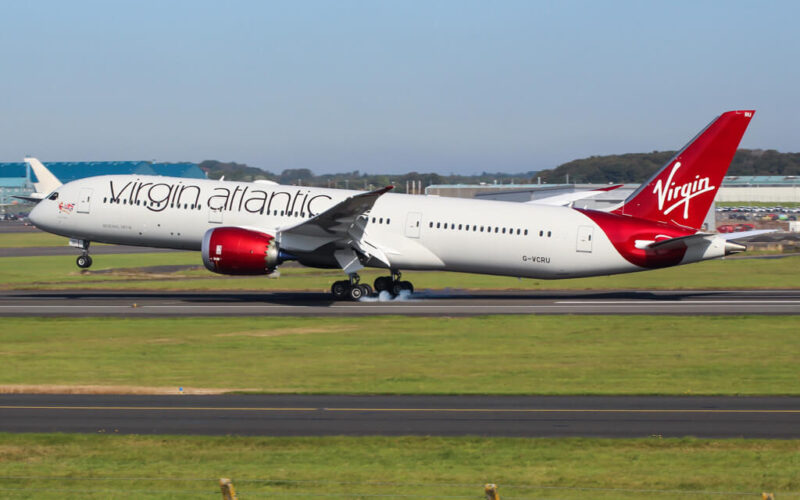“Fair winds and following seas” ‒ a Virgin Atlantic’s Boeing 787-9 Dreamliner reached a thrilling speed of 801 mph while flying over the United States. While this ground speed seemingly leaves behind the speed of sound (767 mph), the jetliner did not, in fact, magically turn supersonic.
On February 18, 2019, en route from Los Angeles (LAX) to London Heathrow, the Dreamliner has reached the milestone speed as it was flying at 35,000 feet over Pennsylvania. Typical cruise speed for a Dreamliner at 35,000 ft is 567 mph.
Almost 800 mph now never ever seen this kind of tailwind in my life as a commercial pilot !! (200 mph tailwind ) pic.twitter.com/0XGTkEP9EB
— Peter James (@jetpeter1) February 19, 2019
The aircraft was pushed forward by great tailwinds, created by an unusually strong jet stream that reached over 200 mph.
Now that’s some tailwind. A Virgin Atlantic flight from L.A. to London reached a speed of 801mph thanks to a roaring jet stream pushing the aircraft above normal flight speeds of around 550mph. Again this was ground speed and not air speed, but still very impressive. pic.twitter.com/Iksy2tk4yJ
— Kevin Lighty (@KevinLighty) February 19, 2019
The extraordinary 801 mph ground speed is more than the speed of sound (767 mph). However, claiming that the airliner went supersonic would be an overstatement, as it was embedded in a speedy moving air and did not actually break the sound barrier.
At 06Z this morning (1AM local), the jet stream over Boston was the fastest anywhere in the hemisphere, at 104 m/s (233 mph). pic.twitter.com/3TD4dbTxGr
— Mathew Barlow (@MathewABarlow) February 19, 2019
A year ago, another Boeing 787-9 Dreamliner reached a top ground speed of 776 mph while flying over the Atlantic Ocean. Norwegian Dreamliner rode a jet stream that at times reached 202 mph, while carrying out a flight JFK to London Gatwick on January 15, 2018.
Note: the title of this article was changed on 10-01-2019, 10:11 (UTC+2) due to the fact that some readers found it misleading.

